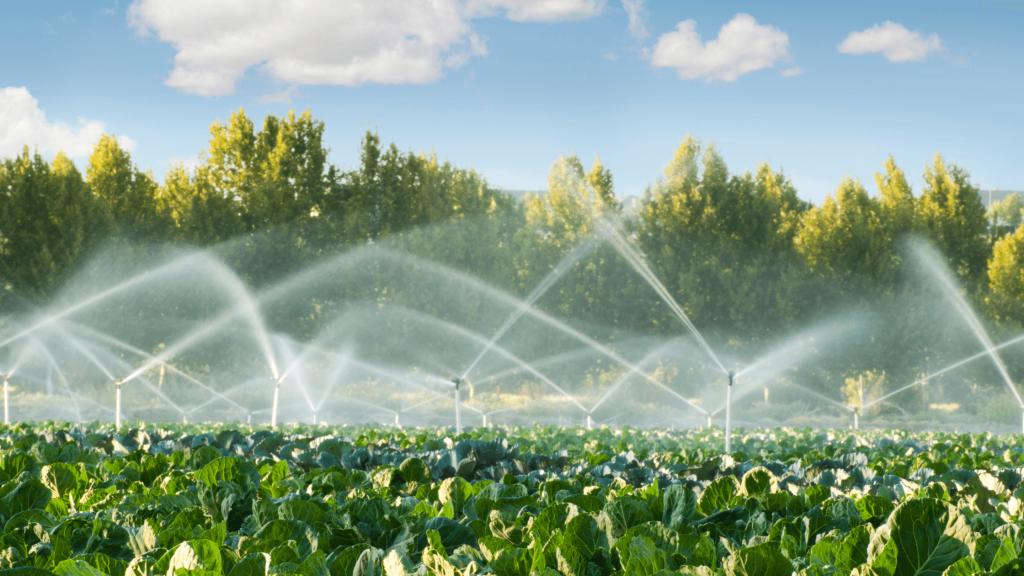Smart irrigation systems are transforming agriculture, especially in areas where water resources are limited. These innovative technologies enable farmers and land managers to optimize water usage, conserve resources, and ensure crops get the moisture they need. In water-scarce regions, adopting smart irrigation practices can mean the difference between thriving agriculture and declining yields.

Understanding Smart Irrigation Systems
Smart irrigation systems utilize advanced technology to monitor, control, and distribute water efficiently. Unlike traditional irrigation methods, these systems rely on data from sensors, weather forecasts, and soil moisture levels to determine when and how much water should be applied. This precise approach reduces water waste and ensures plants receive the exact amount needed for healthy growth.
How Smart Irrigation Benefits Water-Scarce Regions
1. Reducing Water Waste
Smart irrigation systems are designed to deliver water only when necessary, significantly reducing waste. In water-scarce regions, this approach is essential to manage limited water supplies effectively. By monitoring soil moisture levels and weather conditions, these systems can prevent unnecessary watering, which is a common issue with traditional irrigation methods.
2. Lowering Operational Costs
Efficient water usage directly impacts operational costs. Smart irrigation systems help reduce water bills and energy costs by ensuring water is used only when needed. In regions facing water scarcity, where water prices can be high, these savings are substantial. Over time, the reduced costs make these systems an economical choice for farmers and land managers.
3. Improving Crop Yields and Quality
Plants need consistent and accurate water levels to grow optimally. Smart irrigation systems provide precise moisture levels that encourage healthy root development and reduce plant stress. This precision results in higher crop yields and better-quality produce, benefiting both farmers and consumers. In water-scarce areas, ensuring crop health is vital for food security.
Key Features of Smart Irrigation Technology
1. Soil Moisture Sensors
Soil moisture sensors are integral to smart irrigation systems. These sensors provide real-time data on the moisture content of the soil, helping the system determine if watering is necessary. By responding to actual soil conditions, the system avoids over-watering, which is essential in conserving water in dry regions.
2. Weather-Based Adjustments
Weather data integration is another crucial feature. Smart irrigation systems connect to local weather stations, adjusting watering schedules based on rainfall predictions and temperature changes. This responsiveness helps avoid unnecessary watering during rainy periods, contributing to significant water savings over time.
3. Remote Monitoring and Control
Smart irrigation systems can be monitored and controlled remotely through smartphones or computers. This capability is particularly beneficial for large farms or remote locations. Farmers and land managers can adjust settings, monitor water usage, and receive alerts, ensuring optimal water use regardless of their location.
Environmental Benefits of Smart Irrigation
1. Conserving Water Resources
In water-scarce regions, conserving water is crucial. Smart irrigation systems use water more efficiently, helping preserve local water sources. This conservation is vital for maintaining ecological balance, especially in areas where water scarcity affects not only agriculture but also local wildlife and communities.
2. Reducing Runoff and Soil Erosion
Traditional irrigation often leads to water runoff, which can cause soil erosion and nutrient loss. Smart irrigation minimizes runoff by applying water precisely where it’s needed. This targeted watering helps maintain soil integrity, reducing erosion and promoting healthier, more fertile soil.
3. Lowering Carbon Footprint
Smart irrigation systems reduce the need for energy-intensive water pumping by using water more efficiently. This reduction in energy consumption leads to a lower carbon footprint, contributing to sustainability efforts in agriculture. In water-scarce regions, where energy and water resources are often intertwined, this benefit is especially valuable.
Economic Advantages for Farmers
1. Enhanced Return on Investment (ROI)
Though smart irrigation systems require an initial investment, the savings on water, energy, and improved crop yields lead to a favorable ROI. Farmers in water-scarce regions can quickly recover their costs through the efficient water use these systems provide, making them a smart financial choice in the long run.
2. Reducing Dependence on Manual Labor
Automation in smart irrigation reduces the need for manual labor, which is particularly beneficial in areas with labor shortages or high labor costs. Farmers can allocate resources more efficiently and focus on other aspects of their operation, such as crop care and soil management, enhancing overall productivity.
3. Enabling Precision Agriculture
Smart irrigation is part of the broader concept of precision agriculture, where resources are applied precisely where and when they are needed. In water-scarce regions, this precision helps maximize every drop of water, creating a sustainable agricultural model that supports both economic and environmental goals.
Conclusion
Smart irrigation systems offer invaluable benefits for agriculture, particularly in water-scarce regions. By conserving water, reducing costs, and improving crop yields, these systems provide a sustainable solution for efficient water management. As global water resources face increasing pressure, adopting smart irrigation technology is not just beneficial—it’s essential for the future of agriculture.
